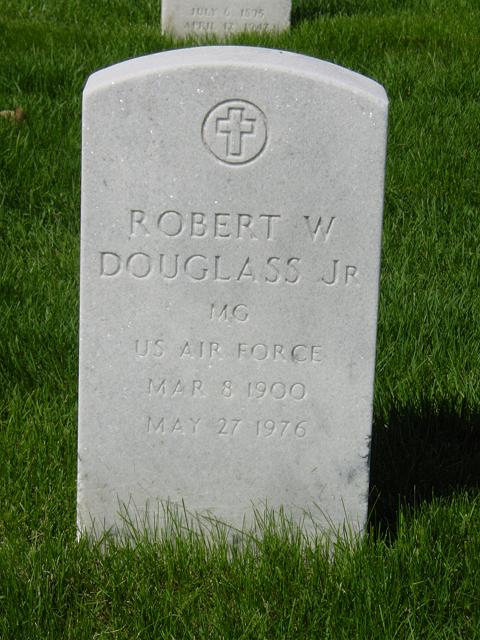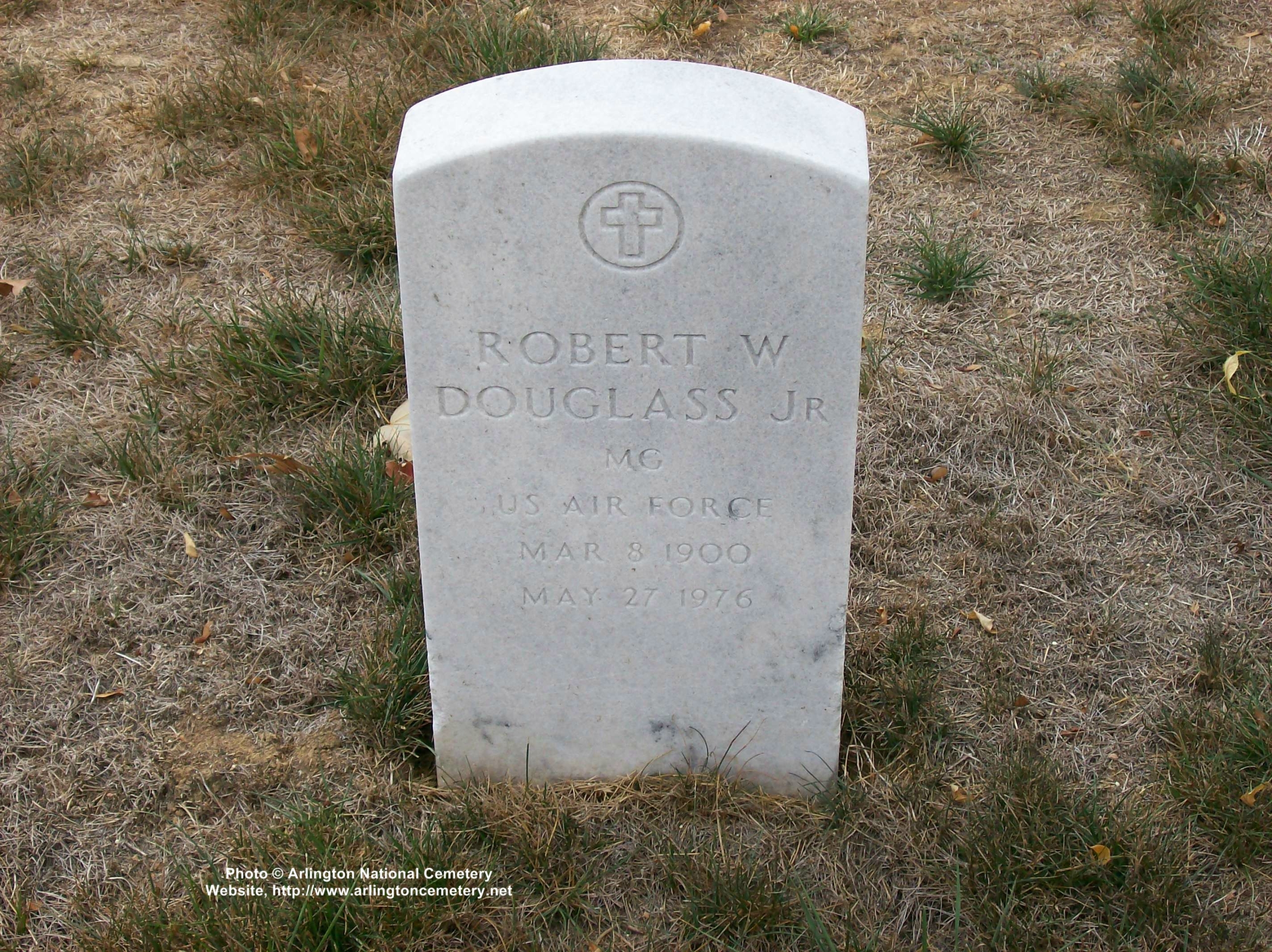Courtesy of the United States Air Force
Suggested By Russell C. Jacobs, June 2007
MAJOR GENERAL ROBERT W. DOUGLASS JR.
Died May 27, 1976
Robert Wilkins Douglass Jr. was born in 1900 in Memphis, Tennessee. He joined the Student Army Training Corps on October 10, 1918; entered the U.S. Military Academy November 3, 1918, graduated June 13, 1922 and was commissioned a Second Lieutenant of Infantry.
After serving with the 29th Infantry at Fort Benning, Georgia, General Douglass entered the Primary Flying School at Brooks Field, Texas in March 1924, was transferred to the Advanced Flying School at Kelly Field, Texas, and completed his flying training a year later. He was assigned to the 94th Pursuit Squadron at Selfridge Field, Michigan. In January 1926 he went to France Field in the Panama Canal Zone for duty with the 24th Pursuit Squadron, and on April 13, 1926 was transferred to the Air Service.
Appointed an instructor in the Air Corps Primary Flying School at Brooks Field, Texas in February 1929, General Douglass served as aide to the commanding general of Duncan Field, Texas from January 1930 to October 1931, moving to Randolph Field, Texas in that capacity. In August 1934 he entered the Air Corp Tactical School at Maxwell Field, Alabama, and graduated the following June. Moving to Barksdale Field, Louisiana, he served with the 55th Pursuit Squadron and later became intelligence and operations officer of the 20th Pursuit Group.
Going to Schofield Barracks, Hawaii in September 1937, General Douglass was assigned to the 18th Pursuit Group, and two years later joined the 18th Reconnaissance Squadron at Mitchel Field, New York. From September 1940 until January 1941 he was an observer in England, and then attended the Air Defense School at Mitchel Field. In April 1941 he was named executive officer of the Third Interceptor Command at Tampa, Fla., becoming operations officer of the Third Air Force that October. The following February he was named a member of the Permanent Joint Board on Defense of Canada and the U.S.
Returning to Hawaii in September 1942, General Douglass commanded the Seventh Fighter Command until April 1944 when he assumed command of the Seventh Air Force in the Central Pacific. In July 1945 he was assigned to the Office of the Joint Chiefs of Staff. That October the general assumed command of the First Air Force at Mitchel Field, New York, taking it to Fort Slocum, New York, the following June. He became commanding general of the Indoctrination Division of the Air Training Command at San Antonio, Texas in July 1947.
Transferred to the U.S. Air Forces in Europe in October 1948, General Douglass was named Chief of Staff, USAFE, at Wiesbaden, Germany. In February 1951 he became acting commander of the 12th Air Force at Wiesbaden and the following month was named special assistant to the commander-in-chief, USAFE, there. That April he assumed command of the 18th Air Force, Tactical Air Command, at Greenville Air Force Base, South Carolina.
Assigned to Air Force headquarters, Washington, D.C. on September 30, 1954, the general was named senior U.S. Air Force member on the Joint Mexican – U.S. Defense Commission. On November 1, 1954 he also became senior U.S. Air Force member, U.S. Delegation, on the Joint Brazil -U.S. Defense Commission.
His decorations include the Distinguished Service Medal, Legion of Merit, Distinguished Flying Cross, Bronze Star Medal, and Air Medal. He is rated a command pilot, combat observer and technical observer.

Michael Robert Patterson was born in Arlington and is the son of a former officer of the US Army. So it was no wonder that sooner or later his interests drew him to American history and especially to American military history. Many of his articles can be found on renowned portals like the New York Times, Washingtonpost or Wikipedia.
Reviewed by: Michael Howard

